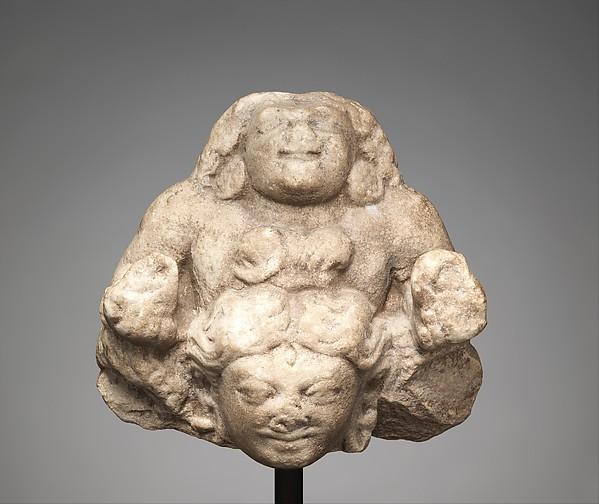
Object Title
Head of Addorsed Maheshvara
Measurements
H. 5 1/8 in. (13 cm); W. 5 1/4 in. (13.3 cm); D. 3 1/4 in. (8.3 cm)
Creation Date
ca. 6th century
Credit Line
Purchase, Anonymous Gift, 2014
Museum Name
Culture
Country of Origin
Object Type
Materials / Techniques
Object URL
http://www.metmuseum.org/art/collection/search/646746
Provenance Information
Acquired on the London market by Simon Digby (b. 1932–d. 2010) in the 1970s; Collection of Simon Digby, Jersey Island, United Kingdom; Purchased by The Metropolitan Museum of Art from the Estate of Simon Digby through John Siudmak in 2014.
Exhibition Information
Exhibited in Asia Week, 2014, Indian and Himalayan Sculpture, John Siudmak at Boerner Gallery, 23 East 73rd Street, New York, New York.
Publication Information
Indian and Himalayan Sculpture, John Siudmak, sale catalogue, 2014, pp. 14–15.
Section of the AAMD Guidelines relied upon for the exception to 1970
Cumulative facts and circumstances
Explain why the object fits the exception set forth above
This work was acquired in London in the 1970s and remained in the Collection of Simon Digby until its acquisition by the Metropolitan Museum. Simon Digby, who was born in India to English parents, was a former curator of the Ashmolean Museum and later an independent scholar. This Head of Addorsed Maheshvara comes from a region in what is today northern Pakistan. The work is likely associated with the Brahmanical mountain complex known as Kashmir Smast, active in the 6th–early 7th century. The iconography represented by works from this site has been of seminal importance in building scholars’ understanding of the evolution of Brahmanical imagery in north-western India generally. Although small in scale, this work nonetheless represents an important early stage in the esoteric iconographic development of Shiva, which is otherwise unrepresented in the Museum’s holdings, thus allowing a greater understanding of early Saiva imagery from the northwestern region of the subcontinent.